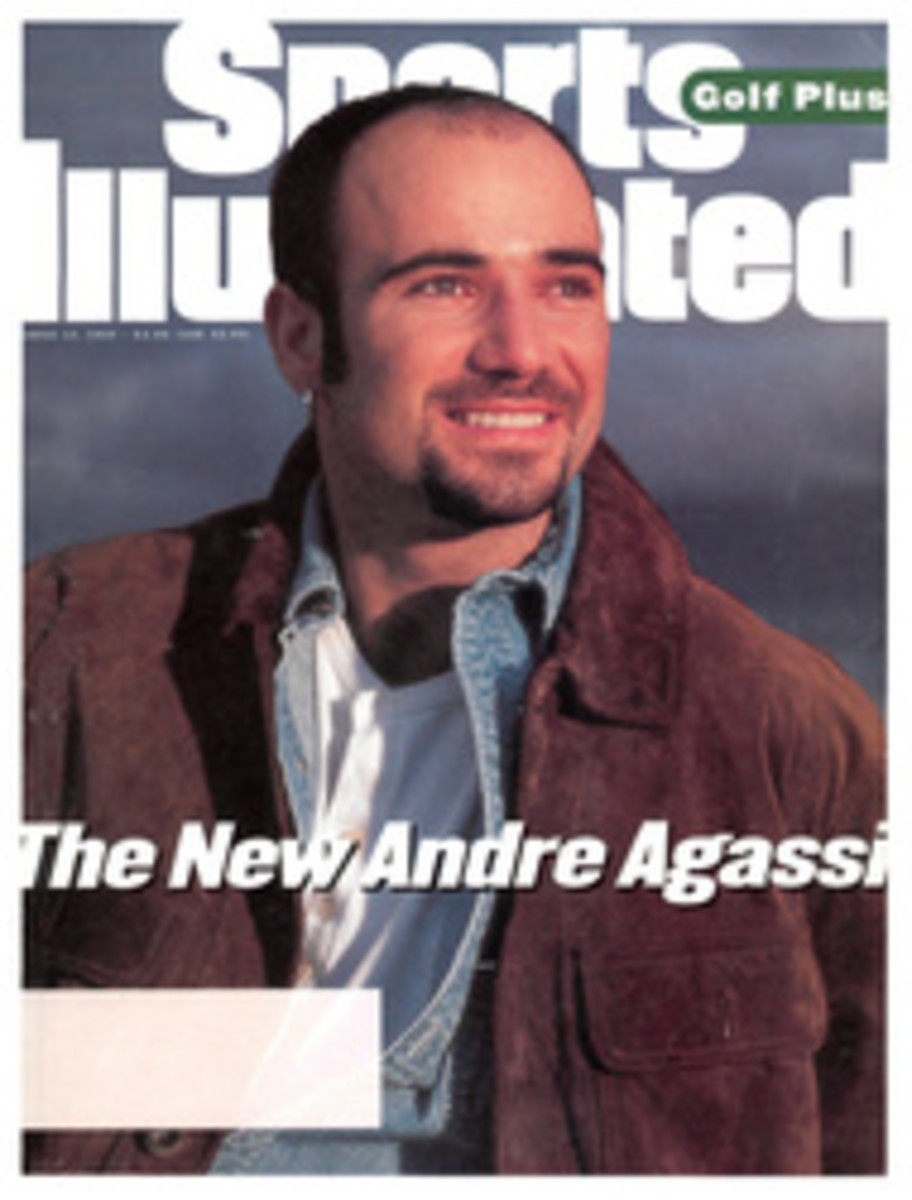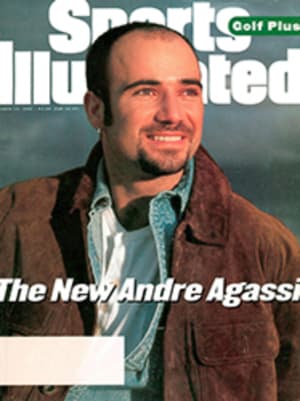
DOWN UNDER IN THE WORST DISASTER IN CUP HISTORY, AN AUSTRALIAN BOAT BROKE UP IN HEAVY SEAS AND ALMOST IMMEDIATELY SANK
A lot of people were surprised that the boats were on the water
Sunday afternoon at the America's Cup trials. It was a rainy,
blustery day in San Diego, with winds gusting to 22 knots. The
seas off Point Loma were confused, if not especially high, topping
out at about five feet. Several of the racing syndicates, wary of
risking their multimillion-dollar International America's Cup
Class yachts, which are as fast and fragile as thoroughbreds, had
radioed the race committee to recommend postponement. Team New
Zealand had called. So had France3 and Nippon Challenge. And so
had oneAustralia, the syndicate headed by John Bertrand, a native
of Melbourne who in 1983 became the only non-American to skipper
an America's Cup winner.
Bertrand, whose 75-foot, $3 million boat had been launched only
three weeks earlier, checked in, along with two other syndicates,
barely a half hour before the scheduled start of the day's racing
and told the race committee he thought the seas were unsafe. But
race director Pat Healy, noting that the winds were forecast to
gust no higher than 18 knots and were then blowing at only 12 to
14 knots, rejected all appeals. Before the regatta, the challenger
syndicates had recommended that no race be started if the winds
were 20 knots or more, and they were well below that limit as the
1 p.m. race start approached. Healy declared that Day 4 of Round 4
of the challenger selection series would go ahead as scheduled.
The featured race pitted the top two challenger boats, Team New
Zealand's Black Magic 2 and oneAustralia 95. The so-called black
beast of New Zealand was undefeated on the water, but one of its
24 victories had been reversed under protest. Bertrand's new,
light-green oneAustralia 95, having been launched at the start of
Round 3, was 7-1 and considered a potential America's Cup winner.
Its lone loss was to Black Magic 2 in a match in which the boats
were never more than six lengths apart. Both had already clinched
a spot in the semifinal round.
On Sunday, Black Magic 2 started well and led by 15 seconds at the
first mark. It was 21 seconds ahead when the boats made the second
mark and turned back upwind. The breeze had picked up and was
blowing some 20 knots. Halfway up that third leg, 45 minutes into
the race, Bertrand, steering his boat through the heavy swells,
heard a sound ``almost like a cannon going off,'' he would say
later. The honeycombed carbon-fiber hull of oneAustralia 95 had
hit a wave or a series of waves, and cracked dead in the middle, a
few yards behind the mast.
At first no one was sure what had happened. One member of the
crew, packing away a sail below deck, assumed that the mast had
snapped. ``Then the boat appeared to fold like a sheet of
cardboard,'' Bertrand would recall. ``And there was this sickening
sound of the boat breaking apart. There was a tearing sound,
almost like a zipper. Rod Davis, the helmsman, said, `I think
we're going to sink.' He looked to Iain Murray, who was one of the
designers of the boat, to confirm. Murray said, `Yes, we're going
to sink.' ''
They were all very calm and collected. Bertrand told his crew to
get their boots off. None of the sailors would have time to put on
a life jacket before abandoning ship. Half the crew went to the
bow, half to the stern, as the boat began buckling in the middle.
The first men jumped into the roiling sea a minute and 10 seconds
after the hull split and swam to one of several nearby support
boats. A couple of crew members waited on the bow for another
minute or so -- almost too long. Once the hull submerged, the
16-ton lead bulb attached to the keel dragged oneAustralia 95 to
the bottom with frightening velocity. Twenty-one seconds after the
last man leaped off and swam for his life and less than 2 1/2
minutes from the moment the boat cracked, the top of oneAustralia
95's 110-foot mast disappeared beneath the slate-gray sea. The
yacht eventually settled on the bottom, 500 feet below.
No one, fortunately, was injured. Black Magic 2 abandoned the race
to help with the rescue effort, and within a few minutes all 17
men who had been on board oneAustralia 95 were safe.
Meanwhile, out on the other race courses, all sorts of
debilitating -- if less catastrophic -- breakdowns were occurring.
France3 was dismasted nearing the final mark against Rioja de
Espana. On the defender's course, Team Dennis Conner's Stars &
Stripes broke a batten (one of the carbon-fiber strips that help
give the sail its shape). Then it broke a batten car (the titanium
joint that connects a batten to the mast). At the starting gun,
the bottom part of its mainsail separated from the mast. Finally
the Conner team limped along with only its headsail hoisted, a
half hour behind America's Mighty Mary, which had cracked a
forward ring frame (the lateral structural reinforcements to the
hull) and broken its main halyard and would be forced to complete
the race under headsail alone.
Bertrand refused to comment when asked if the race committee was
wrong in allowing the boats to race in the questionable
conditions. But he clearly was upset. France3 supported the
committee's decision despite its earlier request for a
postponement. ``If the defenders race, the challengers must
race,'' said French skipper Marc Pajot.
Harold Cudmore, the French technical adviser, who served in that
capacity for America in its successful 1992 Cup campaign, agreed:
``The race committee did the right thing. But the question from an
engineering point of view is, Did [oneAustralia] build the boat
too light? You take a risk, you have to pay the penalties.''
A more expensive and dramatic penalty could hardly be imagined.
The sinking of oneAustralia 95 is considered the worst disaster in
America's Cup history. The boat was not a radical design but,
rather, a refinement of its predecessors. Seemingly neither more
nor less dangerous than most of the other boats in this most
delicate of fleets, the hull design of oneAustralia 95
represented, in the end, a search for speed that turned out to be
the final, reckless breath of air into a balloon already fully
distended. The envelope was pushed, and this time it tore apart.
As of Monday the Australians were coordinating plans with the U.S.
Navy to conduct a salvage operation. Bertrand hopes that
oneAustralia 95's mast, sails and hardware might be saved and
still be of use as his syndicate continues its now highly
improbable quest. Bertrand will race his first boat, oneAustralia
94, for the remainder of the trials. In the opening two rounds
that boat's record was 8-4.
``[OneAustralia 95] represented about 20,000 man-hours of work,
and it was quite sickening to see it disappear so quickly,''
Bertrand said. ``But as I said to the boys, we'll live to fight
another day.''
That's one thing to be thankful for. Here's praying it's not a
blustery day.
COLOR PHOTO:JACK SMITH/AP In less than three minutes, the yacht cracked amidships and plunged out of sight as Bertrand (opposite, below) and his crew jumped off and swam to rescuers. [OneAustralia 95 and its crew]COLOR PHOTO:DAVID MCNEW/REUTER [see caption above--headshot of John Bertrand]COLOR PHOTO:ACTV/PPL MEDIALINK [see caption above--close-up of crack in hull of OneAustralia 95]COLOR PHOTO:AP/ACTV [see caption above--OneAustralia 95 sinking as rescuers pull its crew out of the water]TWO COLOR PHOTOS:ACTV/REUTER [see caption above--two shots of OneAustralia 95 sinking as rescuers pull its crew out of the water]COLOR PHOTO:AP/ACTV [see caption above--crew of OneAustralia 95 aboard rescue boat]

